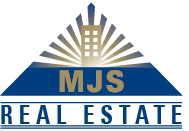Introduction
In my previous blog, I defined and explained the nature of gross-up clauses included in certain commercial leases (office, industrial and retail space). Using specific examples, I have demonstrated that when properly interpreted and calculated, the gross-up clause re-establishes equity in sharing the costs, between landlords and tenants, that vary according to the occupancy rate of a building.
The commercial real estate industry being what it is, many landlords have distorted the process over the years by taking advantage of the widespread confusion over this topic in the industry. Others simply did not understand the rationale and the operation of these clauses.
Let’s look at some of the most common errors in the interpretation and application of these clauses. These situations will be illustrated from examples that will be based on the same assumptions as those used in the previous blog. (click here to see the examples)
Gross-up applied without any legitimate right to do so
Since the result of the gross-up consists of an artificial cost (the actual cost being the amount actually paid by the lessor for housekeeping), this gross-up can only be included in the cost of the tenant’s additional rent if the lease clearly provides the right to the lessor to include such an increase in the rental cost. Accepting the opposite would open the door for lessors to include any other imaginary cost in the tenants’ rent. Yet some landlords include gross-ups in their tenants’ rent even if no gross-up provision is included in the leases.
100% occupancy? In theory only…
A gross-up clause that is written to increase costs as if the property were 100% occupied, often results in an unfair advantage of the landlord to the detriment of tenants. Although full occupancy may be possible in some markets over a period of time, commercial buildings rarely have a vacancy rate of 0%. So if it is not customary for a building to be 100% occupied by tenants, why could the lessor recover 100% of its costs via the gross-up process and this, as soon as the actual occupancy rate is less than 100%?
The solution to this issue is simply to provide that the gross-up clause will apply only if the occupancy rate of the building for the year is lower than the standard occupancy rate. For example, if the historical average vacancy rate of a building is 5%, the gross-up clause may be worded to apply only when the occupancy rate is less than 95%. The landlord could then adjust the cost of cleaning as if the building were 95% occupied. Scenario 4 was calculated based on this situation.
Scenario 4: the building is 80% occupied with a 95% gross-up clause
In this fourth scenario, the gross-up clause applies since it was provided for in the leases and the occupancy rate is less than 95%. By increasing the cost of maintenance, to the amount obtained if the building was 95% occupied, the lessor recovers 88.6% of the total actual cost of the housekeeping contract ($ 124,000 / $ 140,000); the cost he assumes is $ 16,000. This amount represents 20% (building actual vacancy rate) of the cost of maintaining common areas ($ 12,000 / $ 60,000) + 5% (historical vacancy rate) of the actual cost of maintaining the leased premises ($ 4,000 / $ 80,000). The lessor thus restores his income shortfall to the same level as if the building had the historical occupancy rate.
As for the tenants, they continue to benefit from 100% of the housekeeping service at a rate of $1.55 per square foot, which is slightly lower than scenario 1 rate. This scenario normalizes cost sharing between the lessor and the tenants at the same level as if the building were 95% occupied (historical rate) and if the leases did not include any gross-up clause.
When it begins to seriously slip: adjust the area!
The most widespread slippage with respect to the application of the gross-up clauses, occurs when the lessor calculates the gross-ups not by increasing the cost of the service (as illustrated by scenario 3) but by allocating the actual cost over the occupied area of the building. Scenario 5 illustrates well the lack of fairness of this method.
Scenario 5: the building is 80% occupied with a 100% gross-up clause included in the leases (wrong method #1 used by landlords)
In this fifth scenario, the gross-up clause is incorrectly applied. By dividing the actual cost by the occupied area rather than the total area of the building, the lessor recovers 100% of the total actual cost of the $ 140,000 housekeeping contract; the cost he assumes is zero. Not only does the landlord recover 100% of the costs of maintaining the leased premises, he is also unfairly paid by the tenants for his shortfall in the cost of maintaining the common areas (as shown in scenario 3). The landlord therefore makes the tenants assume one of the intrinsic risks that is reserved to any real estate owner, i.e. the risk associated with the vacancy rate of the building.
As for the tenants, they must now unfairly subsidize the business risk of the lessor by paying more for the same housekeeping service. While the standard rate for the housekeeping of the building should be in the range of $ 1.55 to $ 1.60 per square foot, as demonstrated in scenarios 3 and 4, they now have to pay $ 1.75 per square foot ($ 140,000 / 80,000 sq. ft.). Tenants pay more than if the building was 100% occupied.
Another kind of slippage: the entire housekeeping cost is considered variable!
The other widespread and unorthodox way of over-inflating costs in a gross-up context is to increase the entire cost, not just the variable portion attributable to leased areas. The gross-up is therefore also applied to common areas, which is totally unfair and goes against the original purpose of these clauses.
Scenario 6: the building is 80% occupied with a 100% gross-up clause included in the leases (wrong method #2 used by landlords)
As illustrated by this sixth scenario, the results and conclusions are identical to those of scenario 5.
The ultimate slippages
Some unscrupulous landlords are full of imagination in the interpretation and application of the gross-up clauses. Here are two concrete examples:
- Gross-up of one or more categories of fixed costs, i.e. those that are not affected by the occupancy rate of the building, such as landscaping or snow removal of the building entrances;
- Double gross-up, i.e. firstly the gross-up of variable costs (scenario 3), then secondly the allocation of this increased cost over the occupied area (reported in scenario 5) of the building and not on the total area.
The gross-up clauses calculation methods of certain landlords can only be considered as being fraudulent.
Next blog
In the next blog, we will see how tenants and their legal representatives can minimize their financial exposure associated with gross-up clauses before signing a lease. During the term of the lease, the safest way for a tenant to unmask his landlord’s gross-up calculation errors is through the granting of a lease audit mandate to a specialist on the matter, such as MJS Financial Management Inc. Do not hesitate to contact us for more information.



